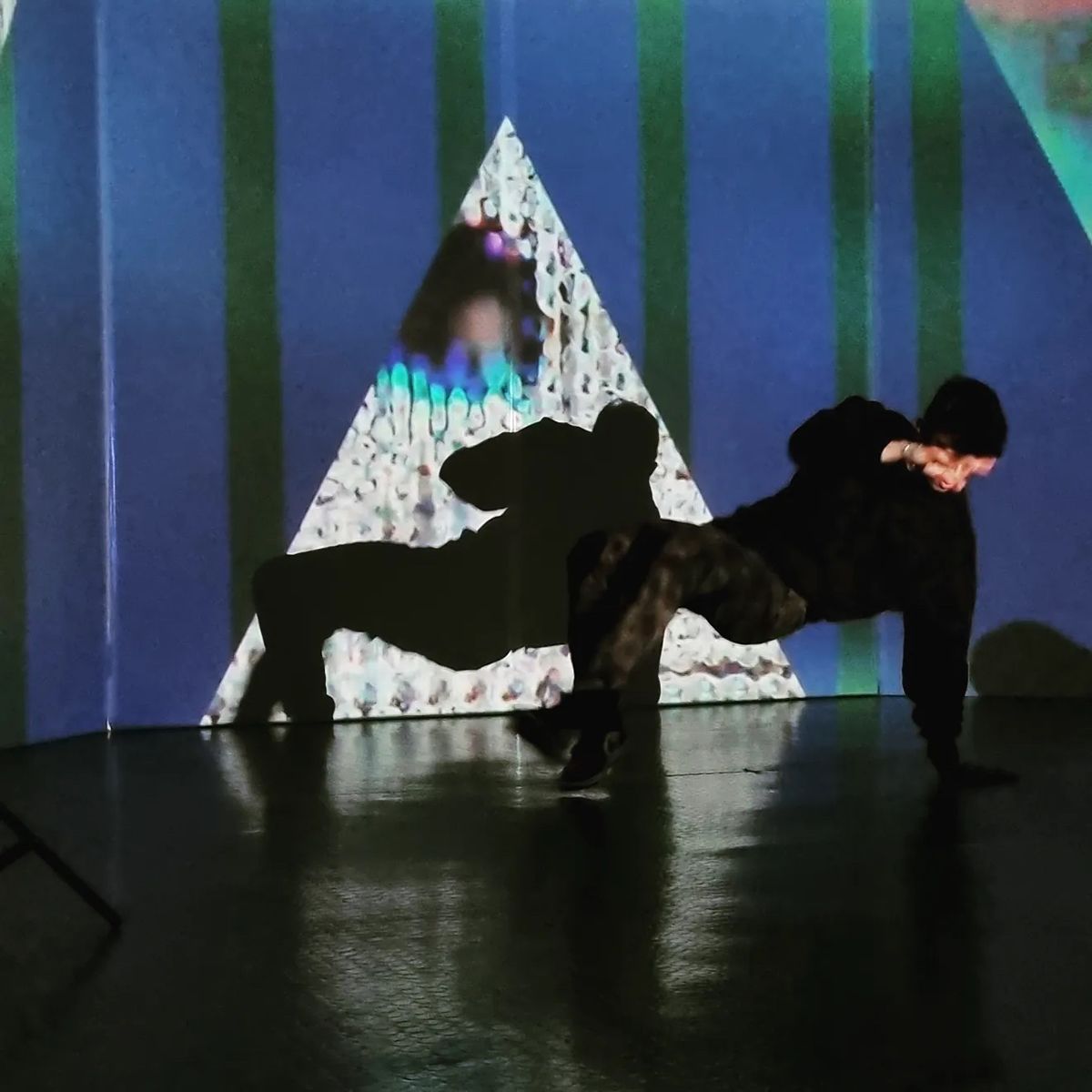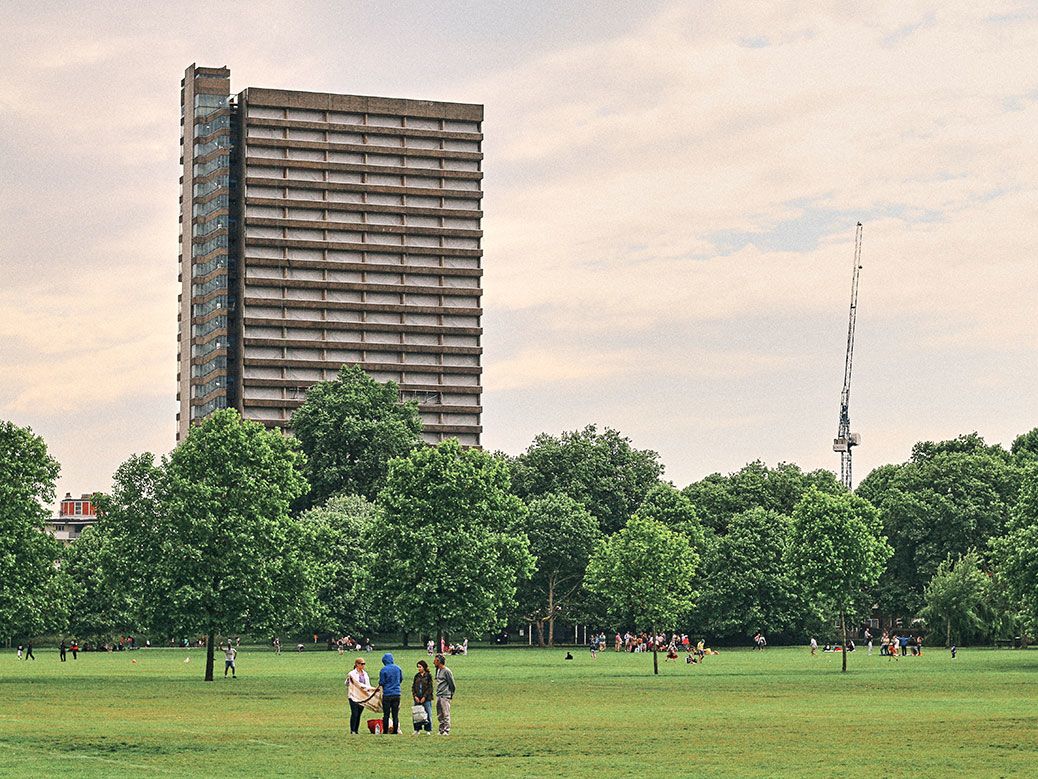
BA (Hons) Graphic and Media Design graduates develop work exploring shadows and movement through Alumni Residency

- Written byChloe Murphy
- Published date 28 July 2023

Building on the established history of innovative design practice at London College of Communication (LCC), our BA (Hons) Graphic and Media Design course prepares students to evolve within a future-facing field.
Exploring areas ranging from branding, identity and social innovation to coding, motion and information design, BA GMD is home to a community of learners, makers and innovators who are passionate about developing core visual skills and experimenting with emerging technologies. Together, they grow as practitioners while generating new ideas – forging networks and collaborations that continue far beyond graduation.
This emphasis on connection is reflected within a range of course activities that embed the experience and insights of LCC alumni. One such example is the GMD Residency: a paid initiative that enables graduates to return to the College and develop an independent project over the course of 5 weeks within the GMD Studio.
With opportunities to participate as teams, collectives or individuals, residents are invited to work alongside current students and staff, and supported to take part in workshops, create new and exciting projects, and share their practice with the wider community. The Residency then culminates with a showcase of the selected participants’ final work at LCC’s summer degree shows, which invite further interaction with friends, family and the wider public along with key figures from the creative industries.
This year, recent graduates Jacob Deakin and Luke Augur were selected as the GMD Alumni Residents for 2023 in recognition of their project proposal which focused on using creative technology to augment physical spaces through shadow and motion. Their final work, Penumbra, was designed to explore the interaction between form and light by using dance as a modular tool within a chosen performance space, with impact amplified through the use of projection mapping and motion graphics.
Hosted as a live performance during LCC Shows 2023, Penumbra was further complemented by a series of workshops held between Jacob, Luke and current GMD students, which enabled them to share skills and insights around the possibilities offered by projection mapping and software such as TouchDesigner to enhance immersive experiences.
We caught up with Jacob and Luke to discuss their journeys towards studying graphic and media design, the opportunities offered by working as a design collective, and the importance of ‘creation through emergence’.
Penumbra | Jacob Deakin + Luke Augur
Tell us about your creative practice.
Jacob: My particular approach focuses on 2 main points of process and experimentation, and I try to apply this ethos across all of my work.
Largely, I’d consider myself to be a creative technologist specialising in interactive/generative design systems, although with a very strong interest in print and typography.
Luke: My design practice is mostly centred around a combination of projection mapping and augmented sculpture, exploring subjects within the realms of architecture, music, poetry and dance. I began developing both processes and interest within this area of design in my second year at LCC, when I started building architectural models in my bedroom to project onto during the Covid lockdowns of 2020/21.
While my skills and scale of projects surrounding projection mapping have grown, I always try to include model-making as a means of small-scale testing and pre-visualisation simply due to how much I enjoy the process of working physically.
Why did you decide to apply to BA (Hons) Graphic and Media Design at LCC?
Jacob: Originally, I applied to the graphics programme at Chelsea College of Arts. I never expected to go to a London-based university, but when given the opportunity to study down south, I decided: why not?
After my first year, I transferred to London College of Communication because I’d heard good things about GMD. The facilities at LCC were significantly better, and due to the size of the course, I felt that it attracted a really interesting plethora of tutors who specialised in much wider and more interesting niche areas.
Luke: Before studying at LCC, I’d previously studied on 16-to-18 foundation course at UCA Canterbury, where I specialised in visual communication. I had no intention of studying a BA at that point, so I worked a couple of full-time jobs in construction and car rental, and I realised how much I missed doing creative things during that time.
I think the main deciding factor for studying Graphic and Media Design at LCC was that the course was built on the fundamentals I’d already developed an interest in, and it seemed broad enough that I wouldn’t be limited in my exploration.

How did you first find out about the Residency opportunity?
Jacob: Both Luke and I graduated last year, so we still had strong connections to people currently on the course. We began collaborating together in Year 3, and have kept it going ever since.
Luke was set to come to my house in Wales so we could set up an exhibition, and before he left, a mixture of people from the course suggested to him that we should apply to the Residency once the applications opened - so we did!
Luke: I first found out about the GMD Alumni Residency by chance during a brief visit to LCC back in February. The following week, I travelled to Wales where Jacob and I were working on a project called Facsimiles which we exhibited in 2 galleries.
Up until this point, we’d been working together on a few non-profit projects for almost a year, so we decided to apply as we had more ideas for projects that we simply didn’t have the funding or facilities to execute.
Why did you decide to get involved?
Jacob: The Residency was a really interesting opportunity to explore a project that Luke and I had already been discussing. He's always had a very strong interest in dance, and I felt it was an exciting opportunity to experiment with how visuals can be driven by movement instead of purely through sound. The idea of manipulating shadow extrinsic from motion fascinated me, and I thought it would be a fun puzzle to try and crack.
Luke: Alongside our Residency project, Penumbra, the opportunity also meant that we were able to collectively run a series of workshops teaching skills for projection mapping and TouchDesigner, as these are our personal specialisms and the collaborative basis of our project, which was great.

What sparked the inspiration for Penumbra, and how did you develop your initial ideas further?
Jacob: Developing a project is always quite an exciting prospect – personally, I feel that around 80-90% of the process should involve a series of experiments in specific measurable elements that you’re particularly interested in exploring. I'm a strong believer in creation through emergence, having initial ideas and pushing them to their logical conclusion following whatever threads the process takes you.
After producing all of this visual material and findings from various processes, it’s then a case of editing this material into a designed context. Of course, there are certain elements that need to be controlled in order to fit an appropriate kind of outcome, but I generally prefer limitations on end-format rather than starting with a rigid idea of the final product.
Luke: Penumbra is a concept that we’d been gradually talking about for a while as something we wanted to form an exhibition from. When the residency came up, we knew we had a general brief that could be adapted to the fit the time, space and budget of the opportunity.
Developing the project from our initial proposal was something that we really put a lot of time into as we explored a variety of aspects. We began by playing around with the idea of using body tracking to distort and create distance in the relationship between a person and their shadow. To contextualise this concept, we then designed mock-ups for staging the project as a performative space, and to sufficiently explore our process, we included several dancers to interact with our system.

What were the highlights of your Residency experience?
Jacob: Throughout the Residency, it was amazingly helpful to be able to speak to our tutors again, as well as interacting with all the students. Being able to spend the time we needed to run a project with access to GMD course resources was also unbelievably useful.
I particularly enjoyed running the workshops - it's a fulfilling feeling to know that I can help people learn my particular set of skills. The experience forced me to examine what I know, and I think it’s helped me be a stronger designer because of that.
Luke: I have 2 main highlights from the Residency: the first was working on a personal project in an environment where I could gain insight from tutors on how to use such opportunities to really benefit my professional practice.
Secondly, running workshops was so much fun. I loved teaching the current students about the skills and processes that I’ve spent the last few years developing, and it was great to share that.

What did you most enjoy about your time at LCC?
Jacob: I really enjoyed studying at LCC because it has a really unique position of attracting such a large number of students and tutors interested in massively disparate parts of design.
As a course, GMD has developed a really good studio culture that isn't always present on all design courses – it encourages creative thinking, and I feel that it doesn't fall into the trap of having a strict 'LCC Style' which I found very beneficial to my own development.
Luke: The thing I enjoyed the most about my time at LCC was being able to learn from tutors with an extensive range of skills and expertise spanning a wide spectrum of graphic and media-based design.
The 6th floor studio in the Tower Block is an amazing environment for encouraging networking with other students - I made plenty of connections, and it was also the catalyst for the collaborative work developed between Jacob and I.
What are your future plans for your professional practice?
Jacob: My current plans are to try and secure funding to study a PhD related to the themes that have been running through my work for the last couple of years, and to further develop my career as an artist/designer.
Luke: I’m very driven to continue my journey in the field of projection mapping, and currently I’m quite open to exploring various ways of applying that in industry.
In the long run, I’m particularly keen to explore more opportunities that allow me to integrate the design process with my personal interest in dance.

What tips would you give to prospective students who are interested in the field of graphic and media design?
Jacob: I would just wholeheartedly suggest that they study at LCC.
BA (Hons) Graphic and Media Design gives an amazing platform to explore many different avenues of design while also providing the institutional knowledge needed for you to learn many of these core skills.
Luke: The course is very broad in its opportunities for learning different design processes but regardless of whatever path you may end up following, there are real, tangible opportunities for you to grow as a practitioner.
My advice would be that if you listen to tutors and peer feedback, you’ll be given the best guidance, and eventually graduate with the knowledge of how to present your ideas clearly with a very considered approach.
Related links:
- Explore more work by Jacob Deakin and Luke Augur.
- Learn about our BA (Hons) Graphic and Media Design course.
- Find out more the Design School at London College of Communication.



